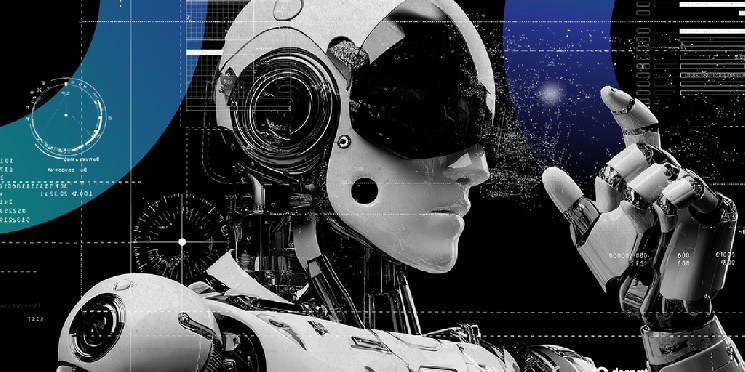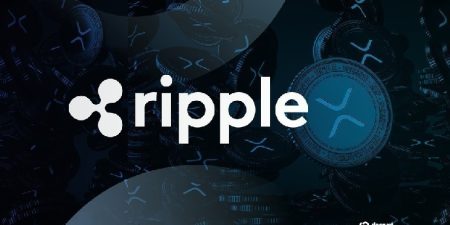Ethereum Poised to Become the Foundation of the AI Agent Economy
Silicon Valley Giants and Crypto Experts Converge on Blockchain Solution for Autonomous Digital Assistants
In a significant technological convergence that could redefine both artificial intelligence and blockchain utility, Ethereum is emerging as the likely foundation for the next frontier of digital innovation: the AI agent economy. Industry leaders, including unexpected allies from tech giants like Google, are increasingly viewing Ethereum’s infrastructure as the ideal backbone for a world where autonomous AI agents conduct business, complete tasks, and interact with minimal human oversight.
The development of AI agents—sophisticated automated assistants designed to navigate the internet and complete complex tasks independently—has accelerated in recent months, with major players like Google and Amazon making strategic moves to establish dominance in this nascent field. These digital entities promise to revolutionize productivity by executing transactions, gathering information, and interfacing with both human users and other machines with unprecedented efficiency. However, before this vision can be fully realized, fundamental infrastructure challenges must be addressed: specifically, how these agents will establish trust, verify identity, and process payments in their interactions.
Davide Crapis, an Ethereum core developer with a focus on AI integration, believes these challenges present a unique opportunity for the blockchain network. “For us, it’s very important. It’s a strategic area,” Crapis told Decrypt, predicting that within three to five years, “the majority of traffic on Ethereum will be coming from machines.” This dramatic shift would transform Ethereum from primarily serving human users to becoming the essential infrastructure for machine-to-machine commerce—a transition that could fundamentally alter the blockchain’s utility and value proposition.
ERC-8004: Building the Highway for AI Agent Interaction
The intersection of blockchain technology and artificial intelligence has found practical expression in ERC-8004, a proposed Ethereum standard interface unveiled by Crapis earlier this month. This protocol aims to standardize how AI agents discover each other on the network and establish sufficient trust to engage in economic interactions—effectively creating the rules of the road for autonomous digital entities.
ERC-8004 directly addresses limitations in existing frameworks like Google’s Agent2Agent protocol, which, while innovative, lacks critical functionality for a truly autonomous agent economy. The Google protocol currently cannot facilitate payments between agents and provides no mechanism for agents to identify and trust each other on the open internet. These constraints effectively limit its utility to interactions between agents within a single organization on non-financial tasks.
Ethereum’s blockchain architecture inherently solves these fundamental challenges. The payment issue is immediately addressed through on-chain transactions, which AI agents can already execute. The network’s robust identity verification mechanisms—the same technology that powers NFTs and other unique digital assets—provide a secure foundation for establishing and validating agent identities. Remarkably, rather than competing with Ethereum’s approach, Google appears to be endorsing it, with Jordan Ellis, a key contributor to Google’s Agent2Agent protocol, co-authoring the ERC-8004 proposal alongside Crapis. “This, for me, is a signal that it’s not too early,” Crapis noted about this cross-industry collaboration. “Even in the traditional AI space, people are looking into agent-to-agent payments, and agent-to-agent identity.”
A Perfect Match: Blockchain’s Human-Unfriendly Interface Becomes Its Greatest Asset
For years, blockchain technology has struggled with mainstream adoption, largely due to its complex user experience that demands significant technical knowledge and commitment from human users. The often-cited criticisms of complicated key management, unintuitive interfaces, and technical barriers have limited cryptocurrency adoption beyond enthusiast communities. However, in a fascinating twist of technological fate, these very limitations may become Ethereum’s greatest strengths in the emerging AI agent economy.
“Our challenge has been making [Ethereum] more UX-friendly for humans to use, trying to shift their behavior,” Crapis explained. “But if the user is an agent or a machine, then it’s fairly easy. Robots don’t have any problems remembering their private keys.” While the traditional economy was built with human limitations in mind—relying on security questions like “What’s your mother’s maiden name?”—blockchain networks operate on pure cryptographic principles that are actually more aligned with machine-based interaction paradigms.
Ethereum’s multi-layer architecture appears particularly well-suited to handle the anticipated explosion in AI agent activity. The main Ethereum blockchain would provide the fundamental security and stability needed for high-stakes transactions, while an expandable ecosystem of layer-2 networks could efficiently process the massive volume of smaller, everyday interactions. This scalable approach gives Ethereum a significant advantage over competing blockchains that might struggle under the weight of millions of AI-driven transactions.
Competitive Advantage in the Machine Economy Race
The Ethereum development team believes their network holds decisive advantages over competing blockchains in the race to become the foundation of the AI agent economy. “Solana, in its current design, cannot sustain the machine economy,” Crapis asserted. “They have no idea how much activity can come on-chain, once these machines start using it.” This perspective highlights the importance of Ethereum’s layered scaling approach, which allows for expansion without compromising the security of the base layer.
The potential impact of AI agent adoption on Ethereum could be as transformative as the decentralized finance (DeFi) boom of 2020, which redefined the network’s utility and drove significant value growth. With major technology companies already exploring agent-to-agent interactions and payment systems, the timeline for widespread adoption may be accelerating faster than many in the industry anticipated.
Crapis and his colleagues are working to finalize the ERC-8004 standard in the coming months, incorporating feedback from the Ethereum community while maintaining a sense of urgency. “I cannot predict when this takeoff will happen,” Crapis acknowledged, “but I feel that we have some urgency to build for it.” This sentiment reflects growing recognition across both the AI and blockchain sectors that autonomous agent economies represent not just a theoretical future, but an imminent reality that demands immediate infrastructure development.
The Dawn of Agentic Commerce: Preparing for a New Economic Paradigm
As the technological foundation for AI agent interactions comes into focus, Ethereum stands at the threshold of potentially its most significant evolution since inception. The network that began as a platform for decentralized applications could soon become the essential infrastructure for a new form of economic activity—one where intelligent digital agents conduct business, execute agreements, and create value with minimal human intervention.
The convergence of artificial intelligence and blockchain technology has long been theorized, but practical implementation has remained elusive. With ERC-8004 and the collaborative efforts between blockchain developers and AI industry leaders, that implementation now appears within reach. For Ethereum, serving as the foundation of the AI agent economy would represent not just increased transaction volume, but a fundamental shift in its user base and core utility.
As machines become the primary users of blockchain networks, the technology’s design priorities may evolve in unexpected ways. Features that frustrate human users could prove irrelevant to machine interaction, while entirely new requirements emerge from the needs of autonomous agents. In this scenario, Ethereum’s early investment in creating standards for agent interaction could secure its position as the primary infrastructure for a new economic paradigm—one where the lines between human and machine activity increasingly blur, and where blockchain technology finally achieves the mass adoption its proponents have long envisioned, albeit through a path few could have predicted.













